| |||||||||||||||||
| |||||||||||||||||
 County results Simpson: 50–60% 60–70% 70–80% | |||||||||||||||||
| |||||||||||||||||
| Elections in Wyoming |
|---|
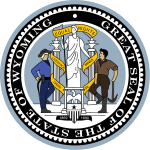 |
The 1990 United States Senate election in Wyoming was held November 6, 1990. Incumbent Republican U.S. Senator Alan K. Simpson was elected to a third term in office.
| |||||||||||||||||
| |||||||||||||||||
 County results Simpson: 50–60% 60–70% 70–80% | |||||||||||||||||
| |||||||||||||||||
| Elections in Wyoming |
|---|
 |
The 1990 United States Senate election in Wyoming was held November 6, 1990. Incumbent Republican U.S. Senator Alan K. Simpson was elected to a third term in office.
| Party | Candidate | Votes | % | |
|---|---|---|---|---|
| Democratic | Kathy Helling | 12,103 | 35.07% | |
| Democratic | Al Hamburg | 7,196 | 20.85% | |
| Democratic | Howard O'Connor | 6,483 | 18.75% | |
| Democratic | Emmett Jones | 4,455 | 12.91% | |
| Democratic | Dale Bulman | 2,291 | 6.64% | |
| Democratic | Don C. Joliffe | 1,983 | 5.75% | |
| Total votes | 34,511 | 100.00% | ||
| Party | Candidate | Votes | % | |
|---|---|---|---|---|
| Republican | Alan K. Simpson (incumbent) | 69,142 | 84.40% | |
| Republican | Nora M. Lewis | 6,577 | 8.03% | |
| Republican | Douglas W. Crook | 6,201 | 7.57% | |
| Total votes | 81,920 | 100.00% | ||
| Party | Candidate | Votes | % | ±% | |
|---|---|---|---|---|---|
| Republican | Alan K. Simpson (incumbent) | 100,784 | 63.94% | ||
| Democratic | Kathy Helling | 56,848 | 36.06% | ||
| Turnout | 211,077 | 70.88% | |||
| Republican hold | Swing | ||||
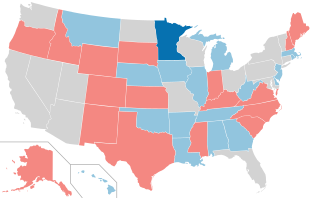
The 1990 United States Senate elections were held on Tuesday, November 6, 1990, with the 33 seats of Class 2 contested in regular elections. Special elections were also held to fill vacancies. The Democratic Party increased its majority with a net gain of one seat from the Republican Party. The election cycle took place in the middle of President George H. W. Bush's term, and, as with most other midterm elections, the party not holding the presidency gained seats in Congress.

The 1988 United States Senate elections were elections for the United States Senate. Held on November 8, the 33 seats of Class 1 were contested in regular elections. In spite of the Republican victory by George H. W. Bush in the presidential election, the Democrats gained a net of one seat in the Senate. Seven seats changed parties, with four incumbents being defeated. The Democratic majority in the Senate increased by one to 55–to–45.

The 1986 United States Senate elections were elections for the United States Senate. Held on November 4, in the middle of Ronald Reagan's second presidential term, the 34 seats of Class 3 were contested in regular elections. The Republicans had to defend an unusually large number of freshman Senate incumbents who had been elected on President Ronald Reagan's coattails in 1980. Democrats won a net of eight seats, defeating seven freshman incumbents, picking up two Republican-held open seats, and regaining control of the Senate for the first time since January 1981. This remains the most recent midterm election cycle in which the sitting president's party suffered net losses while still flipping a Senate seat.

The 1984 United States Senate elections were held on November 6, with the 33 seats of Class 2 contested in regular elections. They coincided with the landslide re-election of President Ronald Reagan in the presidential election. In spite of the lopsided presidential race, Reagan's Republican Party suffered a net loss of two Senate seats to the Democrats, although it retained control of the Senate with a reduced 53-47 majority. Democrats defeated incumbents in Illinois and Iowa, and won an open seat in Tennessee, while Republicans defeated an incumbent in Kentucky.

The 1978 United States Senate elections were held on November 7, in the middle of Democratic President Jimmy Carter's term. The 33 seats of Class 2 were contested in regular elections. Special elections were also held to fill vacancies.

The 1972 United States Senate elections were held on November 7, with the 33 seats of Class 2 contested in regular elections. They coincided with the landslide re-election of Republican President Richard Nixon. Despite Nixon's landslide victory, Democrats increased their majority by two seats. The Democrats picked up open seats in Kentucky and South Dakota, and defeated four incumbent senators: Gordon Allott of Colorado, J. Caleb Boggs of Delaware, Jack Miller of Iowa, and Margaret Chase Smith of Maine. The Republicans picked up open seats in New Mexico, North Carolina, and Oklahoma, and defeated one incumbent, William B. Spong Jr. of Virginia.

The 1952 United States Senate elections was an election for the United States Senate which coincided with the election of Dwight D. Eisenhower to the presidency by a large margin. The 32 Senate seats of Class 1 were contested in regular elections, and three special elections were held to fill vacancies. The Republicans took control of the Senate by managing to make a net gain of two seats. However, Wayne Morse (R-OR) became an independent forcing Republicans to rely on Vice President Richard Nixon's tie-breaking vote, although Republicans maintained a 48-47-1 plurality. Throughout the next Congress, Republicans were able to restore their 49-46-1 majority. This was the third time, as well as second consecutive, in which a sitting Senate leader lost his seat.

The 1930 United States Senate elections occurred in the middle of Republican President Herbert Hoover's term. The 32 seats of Class 2 were contested in regular elections, and special elections were held to fill vacancies. With the Great Depression beginning to take hold, Republican incumbents became unpopular, and Democrats picked up a net of eight seats, erasing the Republican gains from the previous election cycle. Republicans retained control of the U.S. Senate since Vice President Charles Curtis cast the tie-breaking vote. This was the first of four consecutive Senate elections during the Depression in which Democrats made enormous gains, achieving a cumulative pick-up of 34 seats.
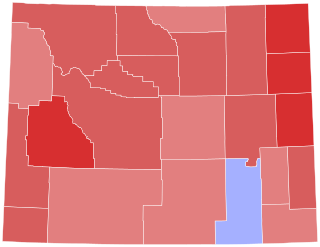
The 1994 United States Senate election in Wyoming was held November 3, 1994. Incumbent Republican U.S. Senator Malcolm Wallop decided to retire instead of seeking a fourth term. Republican U.S. Representative Craig L. Thomas won the open seat, defeating Democratic Governor Mike Sullivan.

The 1992 United States Senate election in Maryland was held on November 3, 1992. Incumbent Democratic U.S. Senator Barbara Mikulski won re-election to a second term.

The 1962 United States Senate election in Arizona took place on November 6, 1962. Incumbent Democratic U.S. Senator Carl Hayden ran for reelection to a seventh term, defeating Republican State Senator Evan Mecham in the general election. Mecham became Governor of Arizona more than two decades later, and was subsequently impeached and removed from office.

The 1978 United States Senate election in Alaska was held on November 7, 1978. Incumbent Republican U.S. Senator Ted Stevens was re-elected to a third term in office, defeating Democrat Donald Hobbs.

The 1966 United States Senate election in Alaska was held on November 8, 1966. Incumbent Democratic U.S. Senator Bob Bartlett was re-elected to a third term in office in a landslide, defeating Republican dentist Lee McKinley in a rematch of their 1960 race. Bartlett would not complete the term, dying in office on December 11, 1968, following complications after heart surgery. Ted Stevens would be elected to complete Bartlett's term, and would serve for 40 years in the U.S. Senate. This was the last time until 2008 that a Democrat was elected to Alaska's Class 2 Senate seat.

The 1978 United States Senate election in Tennessee took place on November 7, 1978, to select the U.S. Senator from the state of Tennessee. Two-term popular incumbent Republican U.S. Senator, Howard Baker, who had served as United States Senate Minority Leader since 1977, ran for re-election against first-time candidate and Democratic Party activist Jane Eskind. Baker won re-election in the general election.

The 1962 United States Senate election in Ohio took place on November 6, 1962. Incumbent Senator Frank Lausche was re-elected to a second term in office, easily defeating Republican attorney John Marshall Briley.

The 1948 United States Senate election in Iowa took place on November 2, 1948. Incumbent Republican Senator George A. Wilson ran for re-election to a second term but was defeated by Democratic former Senator Guy Gillette.
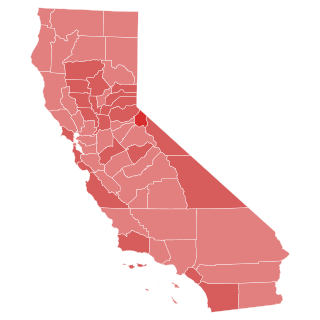
The 1962 United States Senate election in California was held on November 6, 1962.

The 1966 United States Senate election in Iowa took place on November 8, 1966. Incumbent Republican Senator Jack Miller was re-elected to a second term in office over Democrat E.B. Smith.
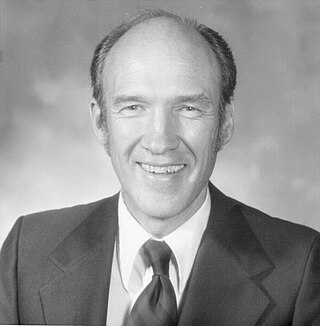
The 1978 United States Senate election in Wyoming was held on November 7, 1978. Incumbent Republican Senator Clifford Hansen declined to seek a third term in office. Former State Representative Alan K. Simpson, the son of former Senator Milward Simpson, won a contested Republican primary and faced Raymond B. Whitaker, the 1960 Democratic nominee for the Senate, in the general election. Despite a favorable environment for Republicans nationwide, Simpson's performance decreased considerably from Hansen's 1972 landslide. Nonetheless, he easily defeated Whitaker, winning 62% of the vote to Whitaker's 38%.

The 1984 United States Senate election in Wyoming took place on November 6, 1984. Incumbent Republican U.S. Senator Alan Simpson was re-elected to a second term in office, defeating Democrat Victor Ryan in a landslide.